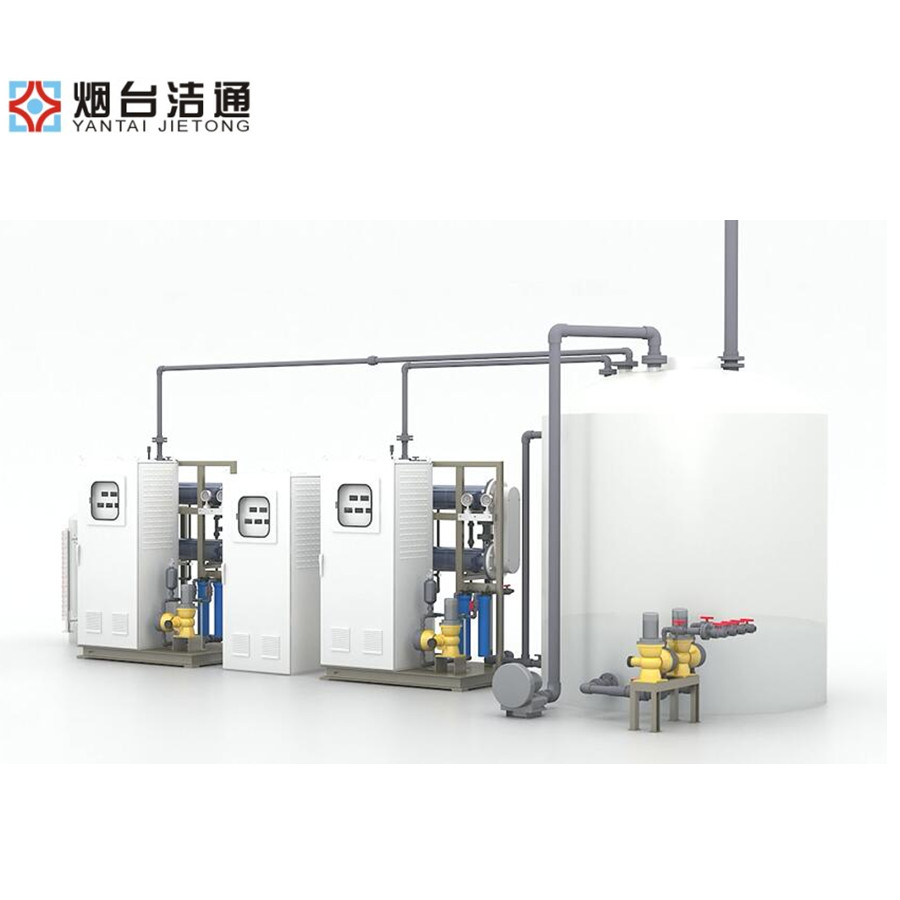The seawater electrolytic chlorination system is an electrochlorination system specially used to treat seawater. It uses the process of electrolysis to generate chlorine gas from seawater, which can then be used for disinfection and disinfection purposes. The basic principle of the seawater electrolytic chlorination system is similar to that of the conventional electrochlorination system. However, due to the unique properties of seawater, there are some key differences. Seawater contains higher concentrations of salts, such as sodium chloride, than freshwater. In a seawater electrochlorination system, seawater first goes through a pretreatment stage to remove any impurities or particulate matter. Then, the pretreated seawater is fed into an electrolytic cell, where an electric current is applied to convert the chloride ions in the seawater into chlorine gas at the anode. The chlorine gas produced can be collected and injected into seawater supplies for disinfection purposes, such as cooling systems, desalination plants or offshore platforms. The dosage of chlorine can be controlled according to the desired level of disinfection and can be adjusted to meet specific water quality standards. Seawater electrochlorination systems have several benefits. They provide a continuous supply of chlorine gas without the need to store and handle hazardous chlorine gas. Additionally, they offer an environmentally friendly alternative to traditional chlorination methods, as they eliminate the need for chemical transportation and reduce the carbon footprint associated with chlorine production. Overall, the seawater electrochlorination system is an effective and efficient seawater disinfection solution that ensures its safety and quality in various applications.
Post time: Aug-24-2023


